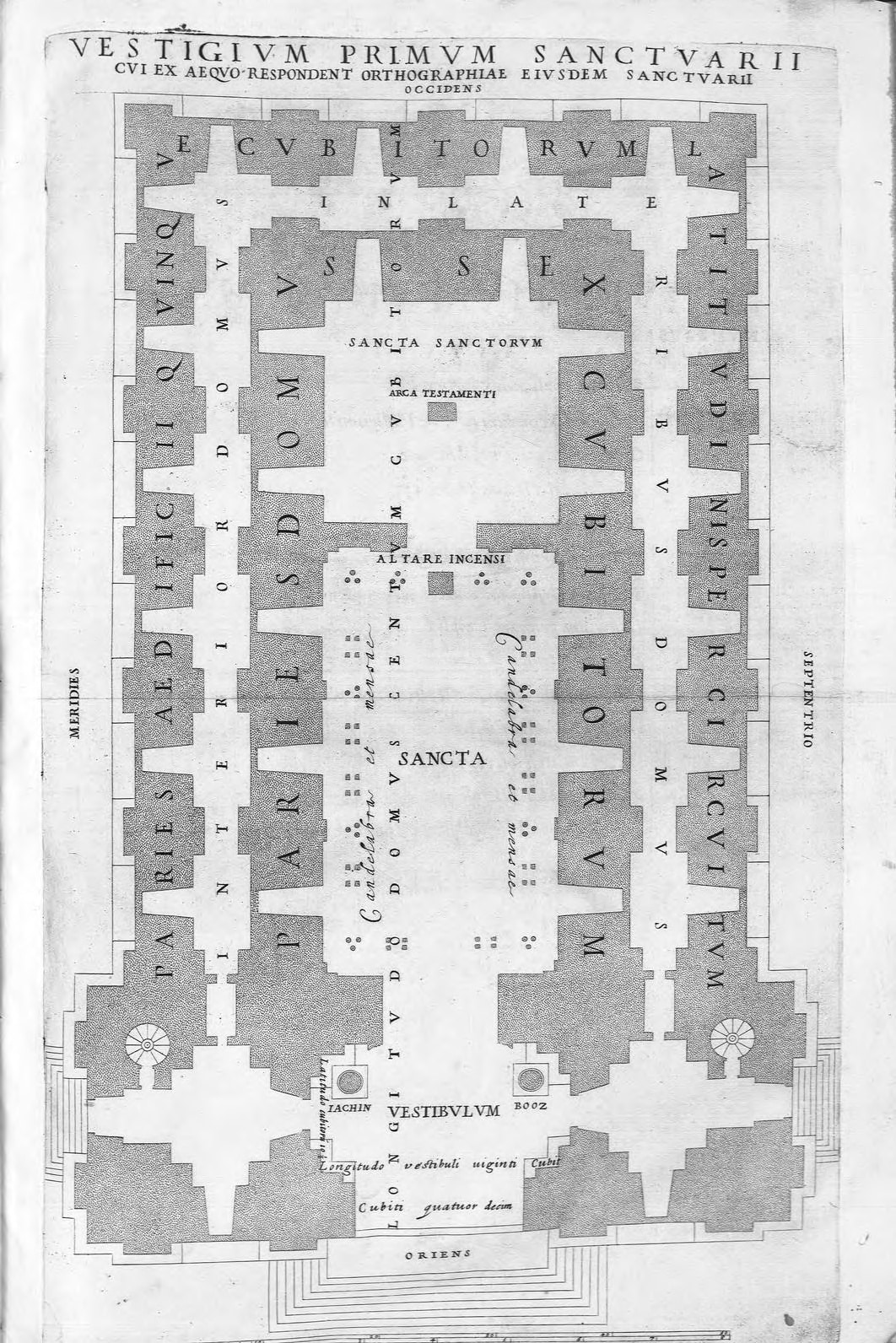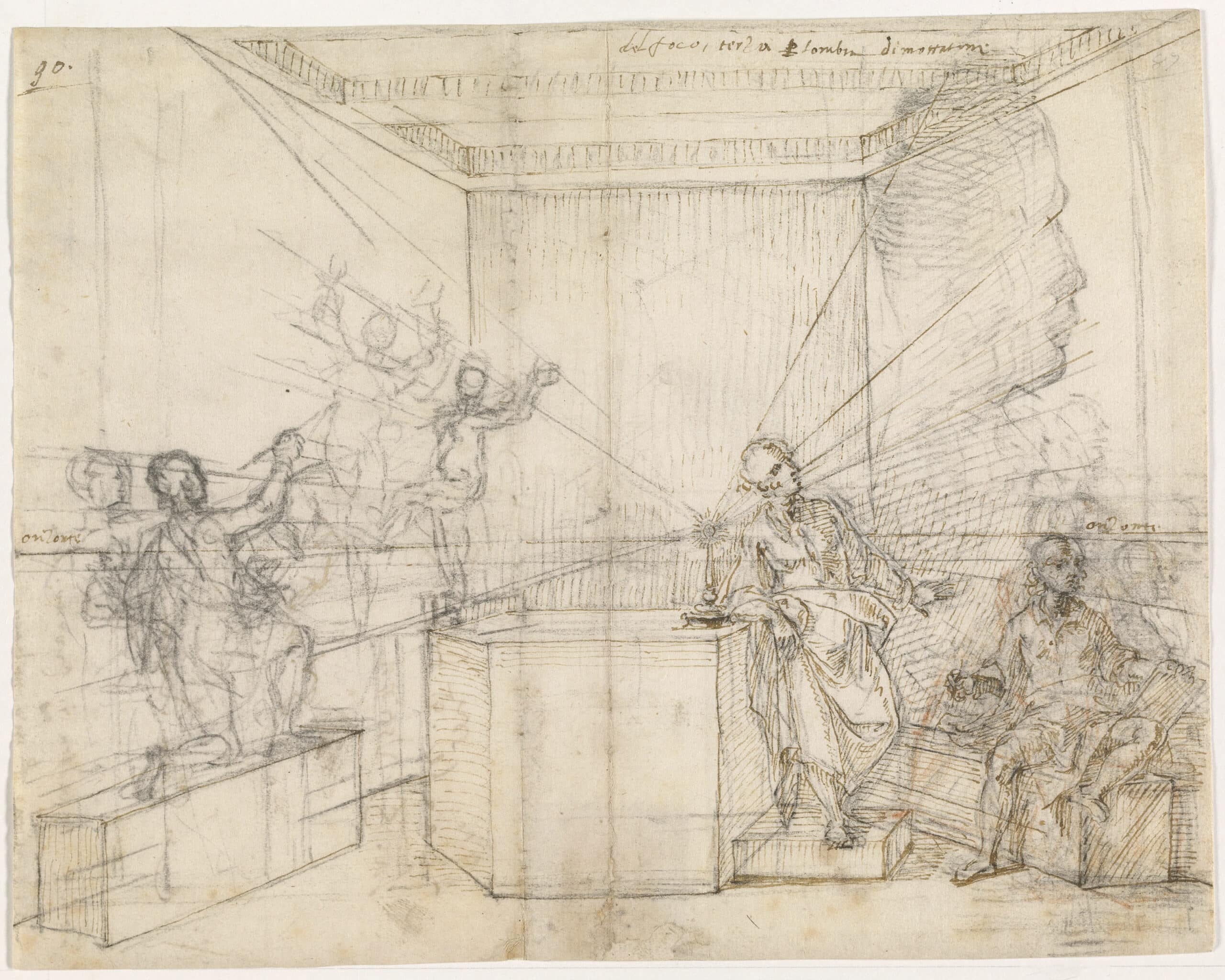DMJ – The Sun as Drawing Machine: Towards the Unification of Projection Systems from Villalpando to Farish
– Francisco Javier Girón Sierra
At the beginning of the 17th century, the Spanish Jesuit Juan Bautista Villalpando spent his last years of life in Rome obsessively working on an interpretation of the Temple of Solomon. When he came to the question of how to represent its plan, he envisioned a new, almost ghostly, way of conceiving it. It would no longer be the heavy impression of a footprint (as Vitruvius said) but a shadow that the sun draws from a crystalline version of this temple—a sun, which in its intricate theological conception had divine connotations. Two centuries later, the English geologist and mining engineer Thomas Sopwith, motivated by entirely different concerns, posited that ‘isometric perspective’, recently invented by the Cambridge chemistry professor William Farish, could be understood and drawn as the shadow of a wirelike model, placed under the sunlight in a unique position. The coincidence in this procedure is intriguing and gives rise to a number of questions. Where did this idea come from? Who else had thought of it across the period in question? And do we find in it the seed of the modern notion of projection?


de Sevilla.
These questions will lead us to recognise the invention and development of a ‘virtual drawing machine’ during the 17th and 18th centuries. It was based on the idea of placing a diaphanous version of the body to be drawn under the sun and using its transparent shadow as an objective representation of it. It fuses a myth inherited from our classical culture—according to Quintilian, the art of painting was born from outlining the opaque shadows cast by the sun—with the Renaissance creation of the subtle concept of the ‘transparent body’, which arises from the enigmatic Neoplatonic doctrines of Luca Pacioli and was recommended by Sebastiano Serlio for learning perspective. This solar machine attracted painters such as Jean Cousin, who explored how to represent the foreshortening of the human body; mathematicians and scholars of perspective such as Jean Dubreuil, who defined the representation of the plane of geometric bodies floating in space; and polymaths such as Pietro Accolti, who used it as a kind of intermediate step, as a shortcut to determine cast shadows in perspective.


However, the ‘solar machine’ conquered only limited territories, as doubts about its status arose. Was it a perspective, and if so, who saw it? A divine sun or a frustrated solar eye that does not see the shadows it draws (as a puzzled Accolti noted)? With Sopwith a radical change took place. By renouncing the idea that a spectator was required, he was able to transform it into a universal instrument applicable to any object. Now stripped of mystery, the machine offered an alternative to Farish’s definition of isometry as a perspective seen by an eye approaching infinity. Instead, it was, substantially, a palpable sensible empirical shadow cast by the sun of a box, a kind of spatial module. It heralded a new stage in which other parallel projections (including axonometry and plan) could be conceived in the same way.
Download the full article as a printable PDF
DMJournal–Architecture and Representation
No. 2: Drawing Instruments/Instrumental Drawings
Edited by Mark Dorrian and Paul Emmons
ISSN 2753-5010 (Online)
ISBN 978-1-9161522-4-3
About the author
Francisco Javier Girón Sierra is an architect and senior lecturer in the Department of Architectural Graphic Ideation at the Escuela Técnica Superior de Arquitectura de Madrid (ETSAM, Universidad Politécnica de Madrid-UPM). Between 2017 and 2022, he was vice-Dean of the PhD and research programme at the school. His research focuses on the role of drawing as an intellectual tool in the emergence of disciplines such as the ‘History of Construction’ and the ‘History of Architecture’ in the 18th and 19th centuries. In his publications, he has paid particular attention to the work of Auguste Choisy, with reference to precursors, such as Piranesi and Rondelet, and pioneers, such as Caumont, Willis and Viollet-le-Duc. His most recent contribution has been the chapter dedicated to Choisy’s Histoire de l’architecture in the collective volume Narrating the Globe: The Emergence of World Histories of Architecture (MIT, 2023). He is currently exploring the impact of natural light on theories of graphic representation and the appreciation of architectural form.
Click here to receive updates about the journal, and future calls for abstracts.
